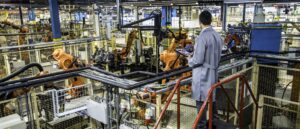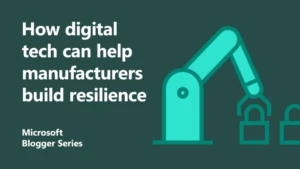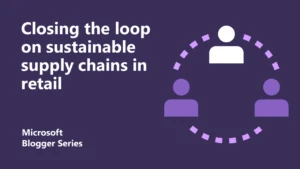
Inside the (distributed) factory of the future
Discover how 3DPrinterOS is using the IoT, Azure services, and 3D printers to revolutionise manufacturing
Touting itself as the ‘factory of the future’, 3DPrinterOS is a decentralised platform that enables you to connect directly to a 3D printer via the web. And for people managing 3D printers, they can connect multiple devices together in a ‘print farm’, and have jobs automatically allocated to an available printer via this web-based system.
But why is this a big deal? Well, anyone that’s ever used a 3D printer—or had to manage more than one of them—may be familiar with some of the common frustrations: software may be different for each printer model, and transferring a print from your computer can be a laborious process, often involving removable storage, and the requirement that you be in the same physical space as your device. But 3DPrinterOS enables you to create farms made up of multiple brands of 3D printer, and have them all accessed remotely online.
“It’s amazing to see what people are doing with the platform,” explains 3DPrinterOS co-founder John Dogru, from the company’s San Francisco HQ. “We cater to education, enterprise, and even have home users here and there. I mean, we’ve got guys setting up their own factories. Take Justin Kelly: he’s a prime example. This guy has around 50 printers set up, run by him and his wife, and when his wife went into labour a few months ago, he was still sat there kicking out jobs from the hospital via 3DPrinterOS.”
Where it all began
From an early age Dogru was obsessed with scrutinising how things work, and was drawn to electronics in the nascent tech revolution of the late 70s and early 80s.
“I got into electronics and computers, and I was writing a lot of software from an early age. I had a Commodore 64, and I was programming games, and then I got into hacking—that was pre-internet,” Dogru tells us. “I started off getting into phone phreaking—which is pretty much what all the guys into tech were doing at the time—so computers and hacking were my life.”
Dogru then went to the University of Texas, where he studied computer science, but since he’d been programming from the age of five or six, the course started to lose some of its appeal.
“I got a bit bored with it,” says Dogru. “And before I graduated I was recruited to Dell. So I dropped out, and began working on motherboard testing. I’d always had an interest in engineering. My parents both did engineering PhDs, and I was building things and playing with electronics from as early as I can remember.”
Following his career at Dell, where he worked on multiple projects—from board testing to developing point-of-sale (POS) systems for retail—Dogru launched his own company.
“I had wanted to do my own thing for a while, so I started my own voice recognition company in the medical field, called NuScribe,” Dogru explains. “I met my current business partner Anton after selling that business, whilst I was in Estonia, and we decided to launch 3DPrinterOS in 2012. We both knew that a time was coming when the physical world and the digital world would collide, and we thought this was an area where we could really make a name for ourselves.”
The pair saw a huge amount of potential in 3D printers, which Dogru likes to call “robots in a box”, and over the next couple of years they worked to develop a centralised, cloud-based platform, that would enable you to go from design to manufacturing to distribution, with as close to zero latency as possible.
The story so far
“We set up in Estonia, and sell-funded the company with $200k,” Dogru tells us. “We immediately got validation from the industry, because people could see that decentralised manufacturing was the future. There was no reason why you should have all this different software for every machine. It made no sense.”
3DPrinterOS has already developed a number of key relationships, including the likes of Duke University, which has set up a farm on more than 35 printers [set up a farm on more than 35 printers ] (3DPrinterOS charges $5500 for schools such as Duke, with enterprise customer paying $200k per site licence). Dogru claims that the platform gives you greater overall efficiency in your 3D printing. Efficiency that has been greatly improved by a move to Microsoft Azure.
“When we moved to Azure we finally had an architecture in place that was truly scalable. My co-founder Anton’s background is in cloud computing, and he saw that Azure would give us a truly elastic platform,” says Dogru. “And to date we’ve had zero downtime. And I mean zero. It’s one thing to manage servers, where some downtime can be accommodated, but with 3D printers if you have one missing data point that’s a whole print ruined.”
Running in the cloud
Another important area was computing in the cloud. The 3DPrinterOS team wasn’t just sending files, as a lot of its processes are very CPU intensive, so they required an extra level of support from their platform provider.
“It was a challenge to find the right company— providing cloud infrastructure, compliance, security, and reliability around the world—but Microsoft ticked all the boxes, and really helped us move to Azure,” says Dogru. “The cloud team worked with us almost every other week to build queries that they didn’t have, and to get things to production grade. We were also really happy with how Microsoft could help us scale into places like China, where other providers didn’t have very good coverage.”
The move to Azure gave 3DPrinterOS customers access to the benefits of local data residency and redundancy, providing them with peace of mind. And database systems and other large data repositories also benefited from the same backup processes. And, off the back of this stability, 3DPrinterOS has been able to take advantage of developing areas of the Azure product offering.
“We’re very much into big data and machine learning, and we collect information from the print jobs we run across 3DPrinterOS,” Dogru tells us. “Even in a great printer like an Ultimaker, there are just so many settings you can choose from. Using 3DPrinterOS, when you send a print via 3DPrinterOS we’re feeding all the information that we’ve collected into the system, and applying settings that have the best chance of producing a successful print. Our platform gives small business the opportunity to take advantage of 3D printing like never before.”
Does your future live in the cloud? Find out how Azure can help transform your business






